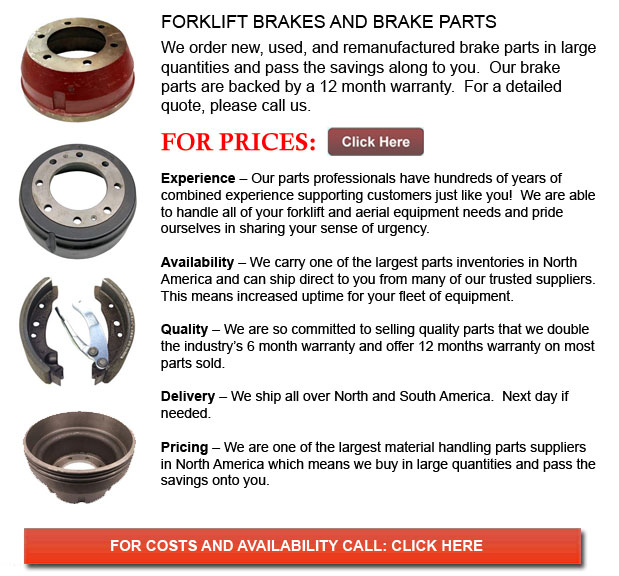
Forklift Brakes - A brake drum is where the friction is supplied by the brake shoes or brake pads. The pads or shoes press up against the rotating brake drum. There are a few various brake drums kinds together with certain specific differences. A "break drum" will generally refer to whenever either shoes or pads press onto the inner exterior of the drum. A "clasp brake" is the term used to be able to describe whenever shoes press against the exterior of the drum. One more type of brake, known as a "band brake" uses a flexible belt or band to wrap around the outside of the drum. If the drum is pinched in between two shoes, it can be referred to as a "pinch brake drum." Similar to a conventional disc brake, these types of brakes are rather uncommon.
Early brake drums, before 1955, required to be consistently adjusted in order to compensate for wear of the drum and shoe. "Low pedal" could cause the required modifications are not carried out satisfactorily. The vehicle could become dangerous and the brakes can become ineffective when low pedal is mixed with brake fade.
There are several different Self-Adjusting systems designed for braking obtainable nowadays. They could be classed into two individual categories, the RAD and RAI. RAI systems are built-in systems which help the tool recover from overheating. The most recognized RAI manufacturers are AP, Bendix, Lucas, and Bosch. The most well-known RAD systems comprise AP, Bendix, Ford recovery systems and Volkswagen, VAG.
Self-adjusting brakes normally utilize a mechanism that engages only if the vehicle is being stopped from reverse motion. This stopping technique is satisfactory for use where all wheels utilize brake drums. Most vehicles these days make use of disc brakes on the front wheels. By functioning only in reverse it is less possible that the brakes will be adjusted while hot and the brake drums are expanded. If adapted while hot, "dragging brakes" could occur, which increases fuel expenditure and accelerates wear. A ratchet mechanism that becomes engaged as the hand brake is set is one more way the self adjusting brakes may function. This means is only suitable in functions where rear brake drums are used. Whenever the parking or emergency brake actuator lever goes beyond a certain amount of travel, the ratchet improvements an adjuster screw and the brake shoes move in the direction of the drum.
There is a manual adjustment knob located at the bottom of the drum. It is typically adjusted via a hole on the other side of the wheel and this involves going beneath the vehicle utilizing a flathead screwdriver. It is of utmost significance to move the click wheel correctly and adjust each and every wheel evenly. If unequal adjustment occurs, the vehicle could pull to one side during heavy braking. The most efficient method to be able to make certain this tiresome task is completed carefully is to either raise each wheel off the ground and spin it manually while measuring how much force it takes and feeling if the shoes are dragging, or give every\each and every one the same amount of clicks utilizing the hand and then perform a road test.
![]() Click to Download the pdf
Click to Download the pdf
Forklift Parts
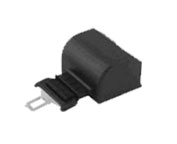
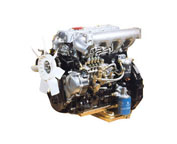
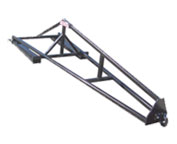
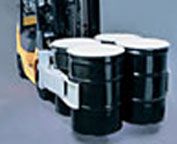
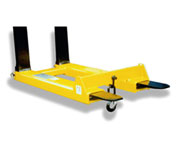
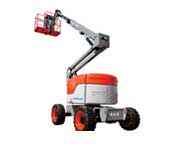
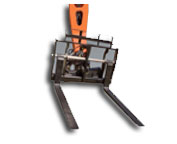
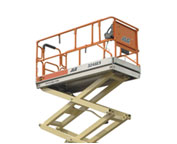
Lift Parts Express
TOLL FREE: 1-888-695-7994
New Westminster, British Columbia
forkliftpartsnewwestminster.ca
Email Us
About Us


